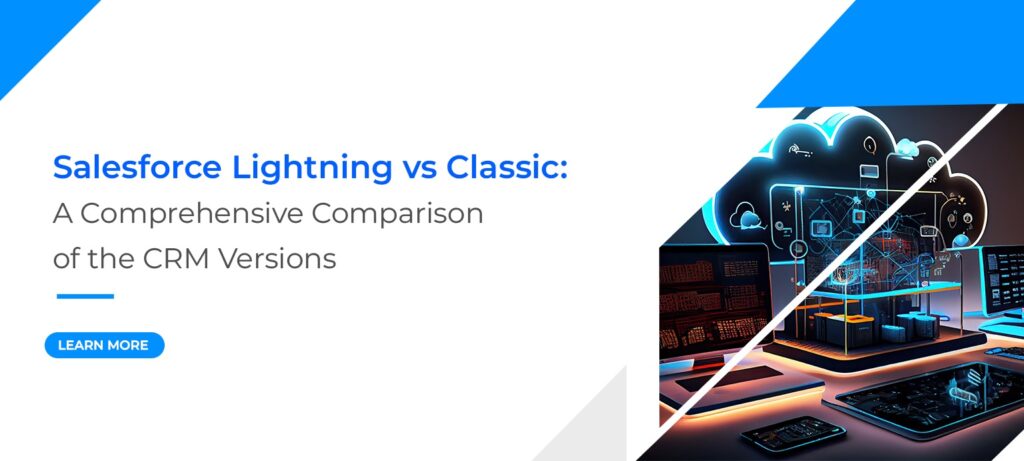Salesforce is a powerful customer relationship management (CRM) platform that helps businesses of all sizes manage their sales, marketing, and customer service operations. It offers many tools and features to streamline business processes and improve productivity. But how can Salesforce transform your marketing strategy and increase your return on investment (ROI)? In this blog post, we will explore the benefits of using Salesforce for marketing, the best practices to follow, and the metrics to measure your marketing performance and ROI.
Benefits of Using Salesforce for Marketing
Salesforce can help you create and execute effective marketing campaigns that drive revenue and growth. Here are some of the benefits of using Salesforce for marketing:
Personalize your customer journey: Salesforce enables you to segment your audience based on various criteria, such as demographics, behavior, preferences, and interests. You can then tailor your marketing messages and offers to each segment, creating a personalized and relevant customer experience. Salesforce also allows you to track and analyze your customer interactions across multiple channels, such as email, web, social media, and mobile. You can use this data to optimize your customer journey and deliver the right content at the right time.
Automate your marketing processes: Salesforce helps you automate your marketing tasks and workflows, saving you time and resources. You can use Salesforce to create and schedule your marketing campaigns, send automated emails and notifications, generate and qualify leads, and assign tasks and follow-ups to your sales team. You can also use Salesforce to integrate your marketing tools and platforms, such as email marketing, social media marketing, web analytics, and content management systems. This way, you can manage your marketing activities from a single dashboard and ensure consistency and efficiency.
Measure and improve your marketing performance: Salesforce provides you with comprehensive and real-time reports and dashboards that show you how your marketing campaigns are performing. You can track and measure various metrics, such as impressions, clicks, conversions, revenue, and ROI. You can also use Salesforce to test and compare different versions of your marketing content and offers, and identify the best practices and opportunities for improvement. By using Salesforce, you can gain valuable insights into your marketing effectiveness and optimize your marketing strategy accordingly.
Best Practices to Follow When Using Salesforce for Marketing
To make the most of Salesforce for marketing, you need to follow some best practices that will help you achieve your marketing goals and increase your ROI. Here are some of the best practices to follow when using Salesforce for marketing:
Define your marketing objectives and KPIs: Before you start using Salesforce for marketing, you need to have a clear idea of what you want to achieve and how you will measure your success. You need to define your marketing objectives, such as increasing brand awareness, generating leads, or boosting sales. You also need to define your key performance indicators (KPIs), such as click-through rate, conversion rate, or customer lifetime value. By defining your marketing objectives and KPIs, you can align your marketing activities with your business goals and track your progress and results.
Segment your audience and create buyer personas: To create effective and personalized marketing campaigns, you need to know your target audience and understand their needs, challenges, and preferences. You need to segment your audience based on various criteria, such as location, industry, company size, job role, and buying stage. You also need to create buyer personas, which are fictional representations of your ideal customers, based on their demographic, psychographic, and behavioral characteristics. By segmenting your audience and creating buyer personas, you can tailor your marketing messages and offers to each segment and persona, and increase your engagement and conversion rates.
Create and distribute engaging and relevant content: Content is the core of your marketing strategy, as it helps you attract, educate, and persuade your prospects and customers. You need to create and distribute engaging and relevant content that addresses your audience’s pain points, provides value, and showcases your unique selling proposition. You also need to use different types of content, such as blog posts, ebooks, white papers, case studies, webinars, videos, and infographics, to cater to different preferences and stages of the buyer journey. You also need to distribute your content across multiple channels, such as email, web, social media, and mobile, to reach your audience where they are and drive them to your website or landing page.
Leverage marketing automation and AI: Marketing automation and artificial intelligence (AI) are powerful features of Salesforce that can help you streamline and optimize your marketing processes and outcomes. You can use marketing automation to create and execute your marketing campaigns, send automated emails and notifications, generate and qualify leads, and assign tasks and follow-ups to your sales team. You can also use AI to analyze your customer data and behavior, and provide you with insights and recommendations on how to improve your marketing performance and ROI. For example, you can use AI to predict your customer’s next best action, optimize your email subject lines and content, and personalize your offers and incentives.
Monitor and optimize your marketing performance and ROI: To ensure that your marketing strategy is working and delivering the desired results, you need to monitor and optimize your marketing performance and ROI. You need to use Salesforce to track and measure your marketing metrics, such as impressions, clicks, conversions, revenue, and ROI. You also need to use Salesforce to test and compare different versions of your marketing content and offers, and identify the best practices and opportunities for improvement. By monitoring and optimizing your marketing performance and ROI, you can make data-driven decisions and adjust your marketing strategy accordingly.
Metrics to Measure Your Marketing Performance and ROI
One of the advantages of using Salesforce for marketing is that it provides you with comprehensive and real-time reports and dashboards that show you how your marketing campaigns are performing. You can use these reports and dashboards to track and measure various metrics that indicate your marketing performance and ROI. Here are some of the metrics to measure your marketing performance and ROI:
Impressions: Impressions are the number of times your marketing content or offer is displayed to your audience, such as on a web page, an email, or a social media post. Impressions indicate the reach and visibility of your marketing campaigns, and help you calculate other metrics, such as click-through rate and conversion rate.
Clicks: Clicks are the number of times your audience clicks on your marketing content or offer, such as a link, a button, or a call-to-action. Clicks indicate the interest and engagement of your audience, and help you measure the effectiveness of your marketing content and offer.
Conversions: Conversions are the number of times your audience completes a desired action, such as filling out a form, downloading a resource, or making a purchase. Conversions indicate the success and impact of your marketing campaigns, and help you measure the value and revenue generated by your marketing efforts.
Revenue: Revenue is the amount of money generated by your marketing campaigns, such as from sales, subscriptions, or renewals. Revenue indicates the profitability and return on investment of your marketing campaigns, and helps you evaluate the performance and efficiency of your marketing strategy.
ROI: ROI is the ratio of revenue to cost, expressed as a percentage. It measures the return on investment of your marketing campaigns, and helps you compare the effectiveness and efficiency of different marketing channels, campaigns, and strategies. A positive ROI means that your marketing campaigns are generating more revenue than they are costing, while a negative ROI means that your marketing campaigns are costing more than they are generating.
The Bottom Line
Salesforce is a powerful CRM platform that can transform your marketing strategy and increase your ROI. By using Salesforce, you can personalize your customer journey, automate your marketing processes, measure and improve your marketing performance, and achieve your marketing goals and objectives. To make the most of Salesforce for marketing, you need to follow some best practices, such as defining your marketing objectives and KPIs, segmenting your audience and creating buyer personas, creating and distributing engaging and relevant content, leveraging marketing automation and AI, and monitoring and optimizing your marketing performance and ROI. By following these best practices, you can unlock the full potential of Salesforce for marketing and drive your business to new heights.
If you want to implement Salesforce for your business, contact us today. We are CSA Consultants, a certified Salesforce partner with years of experience and knowledge in Salesforce implementation and optimization. We can help you set up and customize Salesforce for your business, integrate it with your existing systems and tools, train your staff on how to use it effectively, and provide ongoing support and maintenance. With our help, you can unlock the full potential of Salesforce for marketing and drive your business to new heights. Do not hesitate to contact us today and let us help you implement and optimize Salesforce for your business.


























